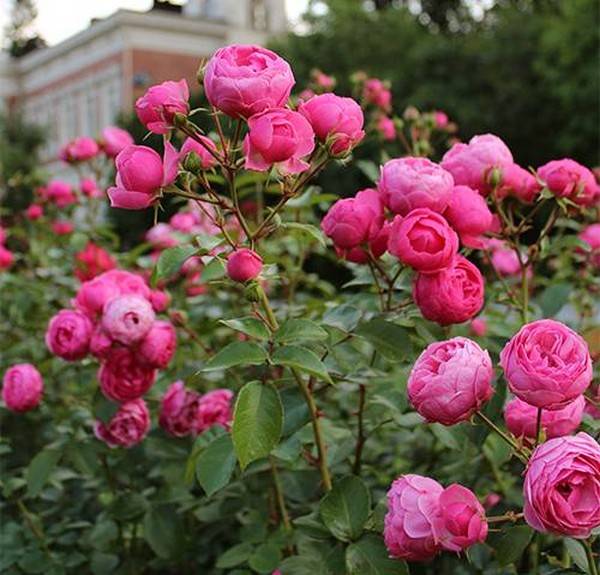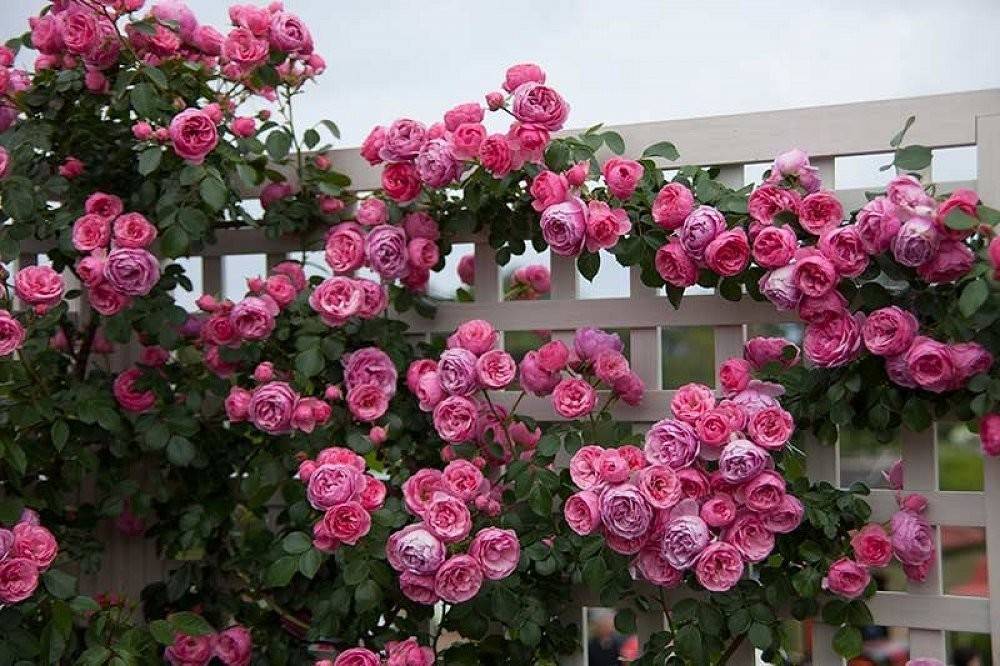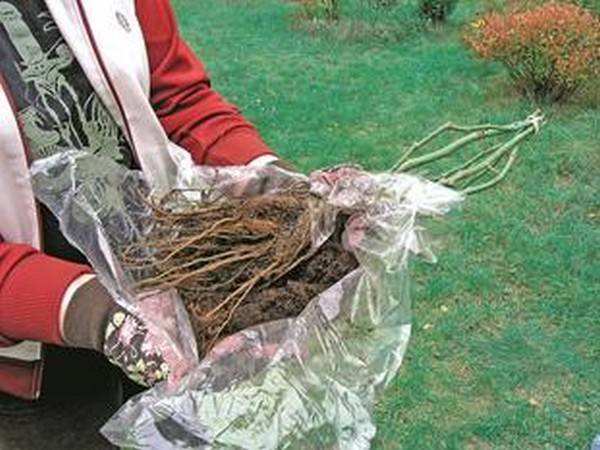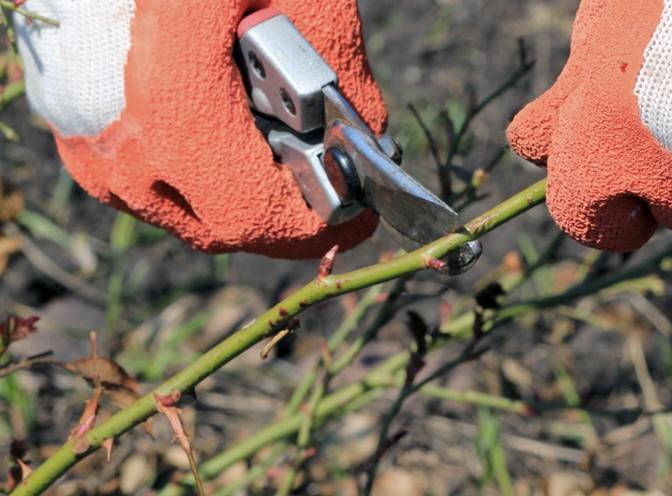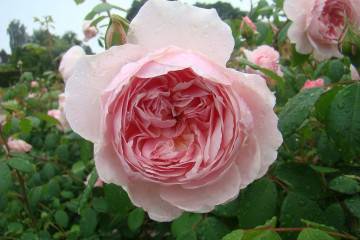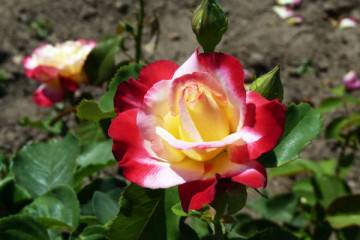Rose Pomponella - characteristics of varietal shrub
Content:
Rosa Pomponella is a frost-resistant, profusely flowering variety, bush, belongs to the floribunda group. Her flowers are densely double, originally folded, with a pleasant aroma.
Rose Pomponella (Pomponella) - what kind of variety, history of creation
The floribunda Pomponella rose was first introduced in 2005 by breeders of Kordes, one of the leading rose breeding and production companies. This variety, having passed the certification, received the ADR quality mark a year later. They are distinguished by the most persistent, profusely blooming roses. For 15 years on the market, the pompom rose has been awarded many awards and prizes at international exhibitions.
Pomponella rose: description
The flowers of this plant resemble old pink pom-poms, similar to under-opened peony buds. The flowers are dark pink, spherical in shape. Up to 7 buds can appear on one brush. The bud grows up to 5 cm in diameter. Leaves are dense, slightly shiny, dark green in color. The bush grows straight with many branches, reaches 80 cm in height and 60 cm in width.
The plant is unpretentious, undemanding to soil and care. It has a subtle, unobtrusive aroma that can be felt even from a dry flower.
Advantages and disadvantages of the variety
The advantages of the Cordes rose from the floribunda Pomponella group include:
- endurance;
- disease resistance;
- fast acclimatization;
- stable good wintering;
- decorativeness;
- abundance of flowers.
The disadvantages of the pompom rose variety are:
- poor heat tolerance;
- long shoots that grow by the end of summer and violate the harmony of the bush;
- single pink color.
Use in landscape design
Designers use the Pomponella variety for planting along curbs, as the central flower in the composition. However, the trunk landing is the most effective. Using a special growing technique, the rose bush takes on the appearance of a flowering tree.
Arches and trellises are also decorated with pompom roses. Having correctly tied up and providing the bush with support, you can achieve that it will stretch out and turn into a climbing rose.
Growing a flower, how to plant it in open ground
The plant does not need complicated care, so even a novice florist can plant it in his garden.
The most popular planting of a plant with seedlings. Before planting a rose in the ground, it is necessary to cut off the dry, dead parts of the plant. At the roots, 1/3 of the length is cut. Then the seedling is treated with a solution of a growth activator.
The planting of rose bushes is carried out in the spring at the end of April or at the beginning of May. You should be guided by the weather conditions. It is important to avoid spring frosts after planting, the soil should warm up as evenly as possible.
Location selection
The pompom rose loves the east and west sides of the garden, shaded areas. The plant is not planted in places where groundwater is as high as possible, as well as in lowlands, places where melt and rain water accumulate. A slight slope to the south, an area protected from wind and drafts, is an ideal place for planting.
Shrubs love black soil, neutral, slightly acidic soil that has the ability to retain moisture and be breathable. Loamy soil requires dilution with peat and sand. Sandy soil is enriched with compost, turf and humus. The acidity of the mail should be pH 6.5-7.5. The ideal soil can be prepared from a ready-made rose substrate by mixing it with soil from the garden.
Planting procedure step by step:
- Dig a hole about 50 cm deep.
- Build an earthen cushion at the bottom of the hole. It will protect the roots from damage.
- Lower the seedling into the hole, while it is important that the grafting site is deepened 3 cm below the edge of the hole.
- Gently cover the roots with earth.
- Water the plant abundantly, the soil should settle.
- Spud the bush by about 16 cm.
When planting in autumn, soil, pine bark, acidified peat should be poured at the base of the rose to protect the bush from frost.
Plant care
Water the Pomponella rose thoroughly for the first 2-3 weeks after planting in open ground. If the summer is dry, then adult bushes need watering once a week. One bush will need from 10 to 15 liters of water. For accurate entry of water into the root system, a mound is made around the rose.
So that the earth crust that has dried out under the sun's rays does not block the access of air to the root system, it is necessary to loosen the soil after watering. To retain moisture, the root area can be covered with hay or tree shavings.
Top dressing and soil quality
Poor heavy soil requires humus fertilization. In autumn, it is advisable to fertilize the soil with rotted manure, dehydrated peat or compost. Loamy soil needs to be loosened. It must be mixed with gravel, sand, bark.
In early spring, the plant is fed with a mullein solution. After a couple of weeks, the soil should be fertilized with nitrogen fertilizers or ammonium nitrate. During the period of bud formation and flowering, the soil is fertilized with phosphorus-potassium compounds. To accelerate growth during the growing season and improve the quality of flowering, complex and organic fertilizers should be used, alternating between them.
You can also use simpler means of feeding the plant. For example, wood ash, iron vitriol, blood and bone meal. Fertilizers can be applied at the root or sprayed on aerial parts of the plant.
Pruning and replanting
Shoot pruning is carried out in spring or late autumn before the first frost. There are three trim options. The choice depends on the goals of the gardener: whether he wants to give a specific shape to the plant or get an abundant flowering. Pruning can be low, medium, or strong:
- Heavy pruning is used to rejuvenate the plant.
- Medium - for maximum flowering, beautiful appearance.
- Weak is used to remove buds that have faded.
Combined pruning allows long-lasting flowering all year round.
Features of wintering a flower
The flower can withstand temperatures up to -20 degrees, but the plant should still be covered for wintering.But first you need to huddle the roots, loosen the topsoil, remove all shoots, then cover with spruce branches, burlap.
Blooming rose
The floribunda Pomponella rose begins to bloom in May and ends in September. After that, there is a time of rest. The flower in autumn and winter prepares for a new time of activity. The flowering time is also influenced by the climate, care, watering and feeding of the plant.
For lush flowering, preservation of the shape of the bushes, the size of the buds, the Pomponella rose needs regular pruning and lubrication of the stems with garden broths. After flowering, it is important to remove all faded buds.
In spring, the main stems of the plant should be shortened by 30 cm, and diseased, weak shoots should be removed. In the fall, you need to pinch the main stems and cut off the shoots on which there were no flowers.
What to do if the rose does not bloom, possible reasons:
- The lack of flowers may be due to disease or pests.
- Rose does not like areas in the sun.
- Excessive spring pruning.
- The plant is undergoing an adaptation process.
- The old bush has not been rejuvenated for a long time.
- Low humidity and lack of trace elements and nutrients.
ъProduction of a flower
In the fall, by cutting off the rose, you can collect stems suitable for cuttings. Cut off shoots are cleaned of leaves. They should be stored in peat, moss or sand at a temperature not exceeding 0 degrees. With the arrival of spring, the shoots are cut into cuttings no more than 20 cm long. Cuttings are planted at the end of April or in the first week of May.
You can propagate the plant with green cuttings from mid-June to early August.
Algorithm for propagation by cuttings:
- The stalk should be about 2 mm thick and no more than 8 cm long.
- The cut is made 5 mm above the kidney.
- The lower cut is made at an angle of 45 degrees, the upper one - 90 degrees.
- The stem of the cutting should be freed from thorns and leaves.
- For better rooting, you can soak the cuttings in a Heteroauxin solution.
- The cuttings are planted in "good" soil.
Diseases, pests and ways to control them
Pomponella is resistant to various diseases; black spot does not affect it. But powdery mildew can appear on leaves and buds at high humidity. But bacterial cancer is especially dangerous for the rose. It manifests itself in the form of knobby red growths, swellings on the stem, roots of the plant.
Young juicy shoots, pink buds are attacked by aphids, rose budworm, spider mite. Treatment with insecticides will help to rid the flowers of them.
Floribunda Pomponella rose is an excellent decoration of the garden from April to September. Moreover, it does not require constant maintenance and high costs. It is not for nothing that it is very popular with gardeners and landscape designers.
